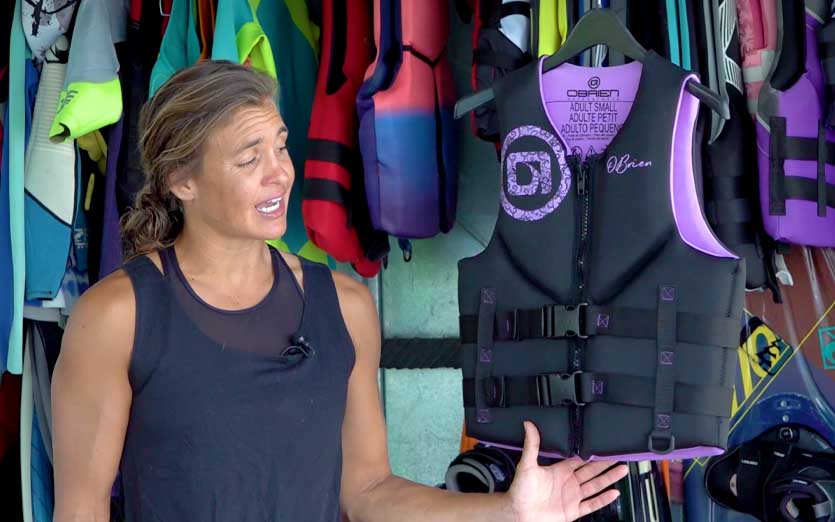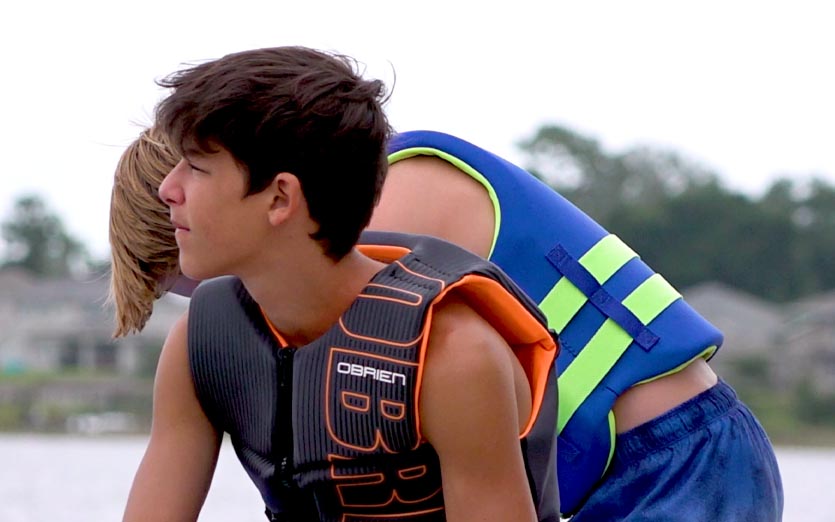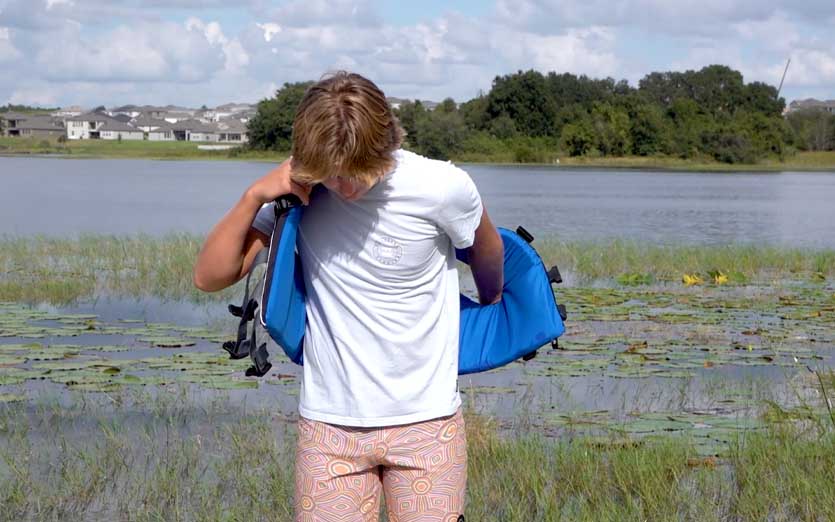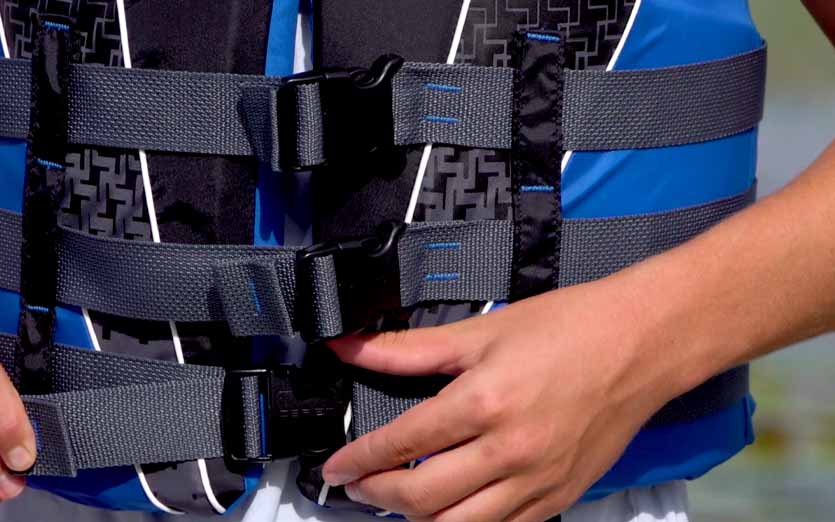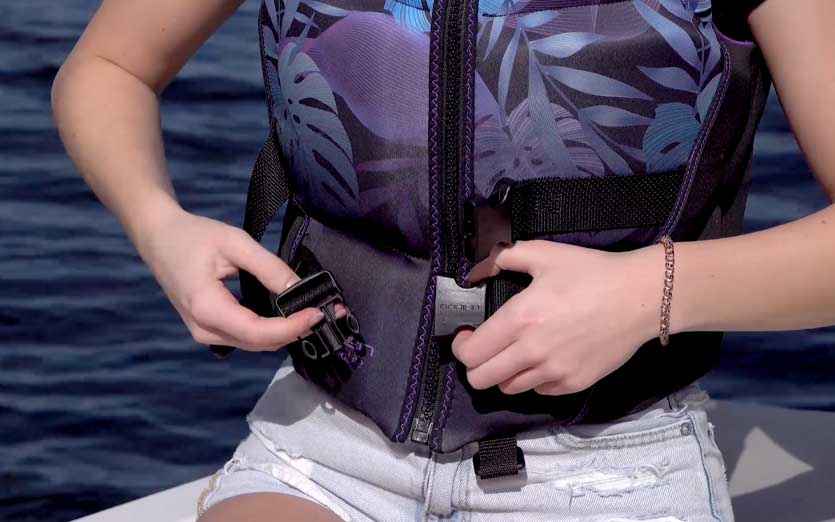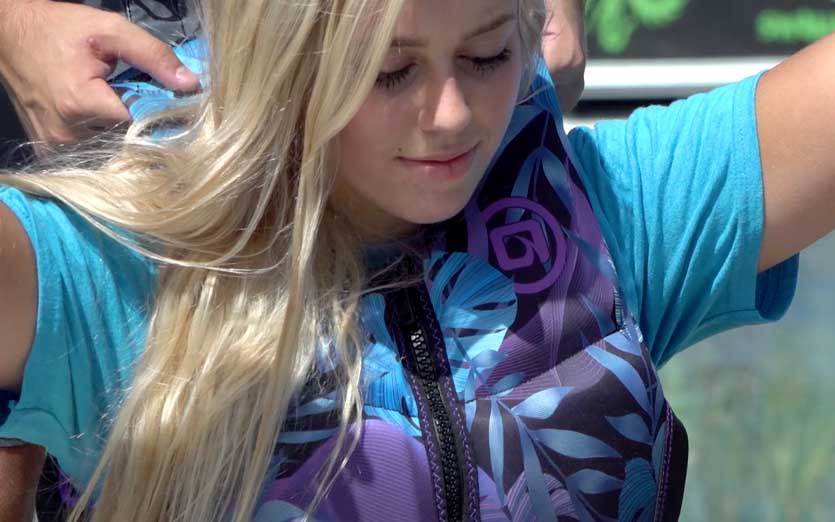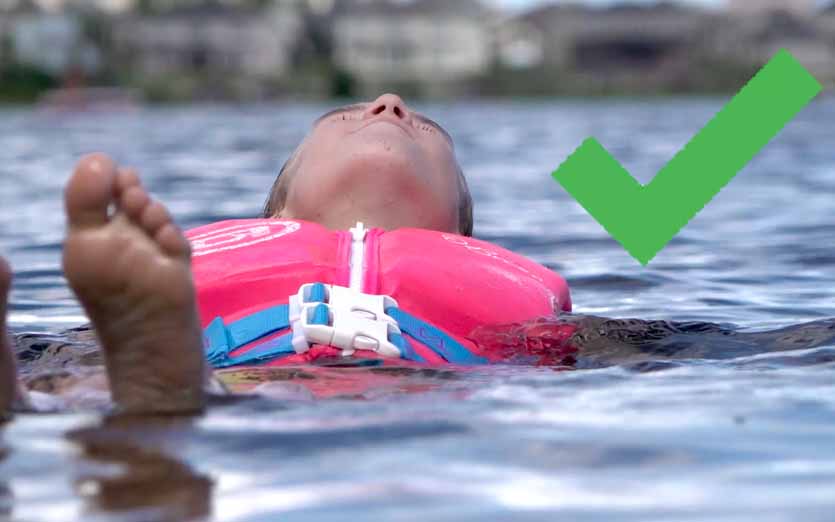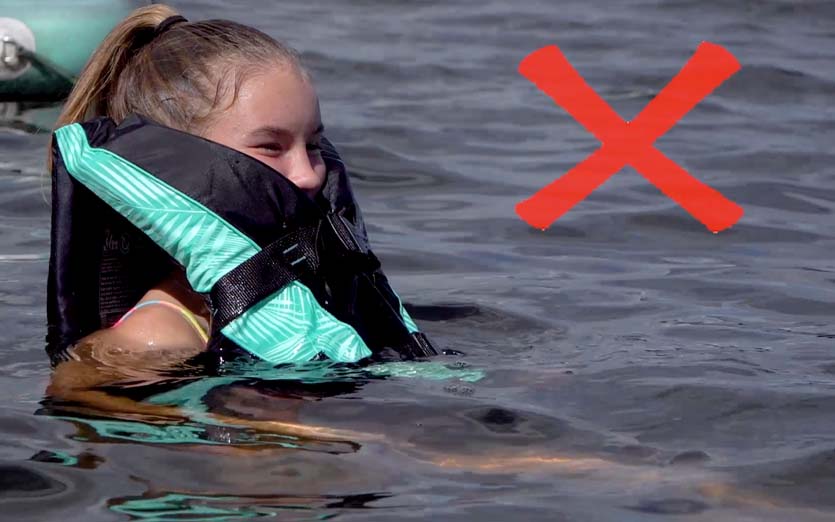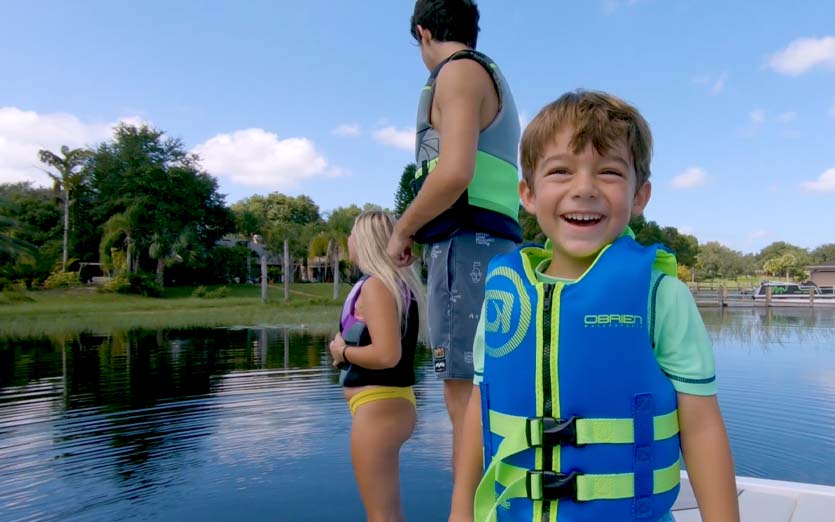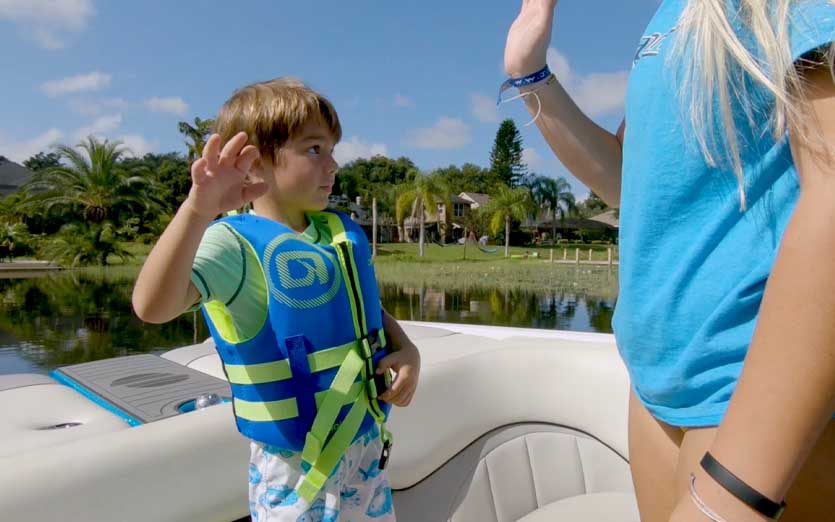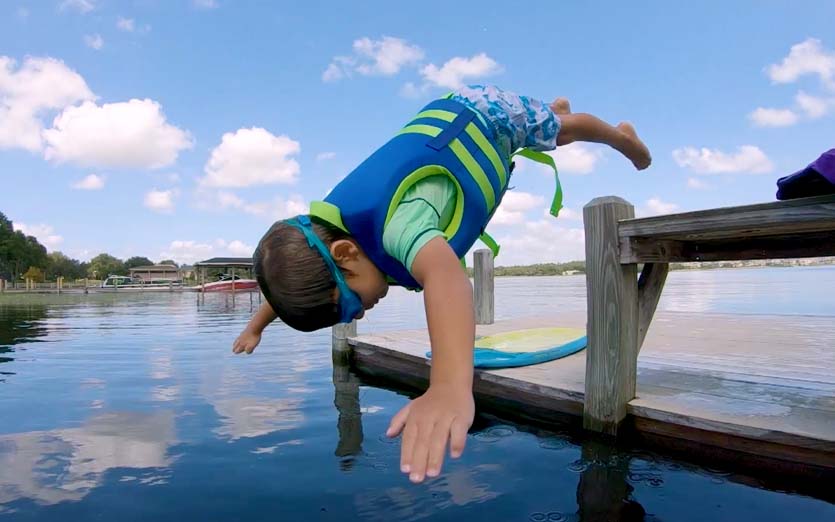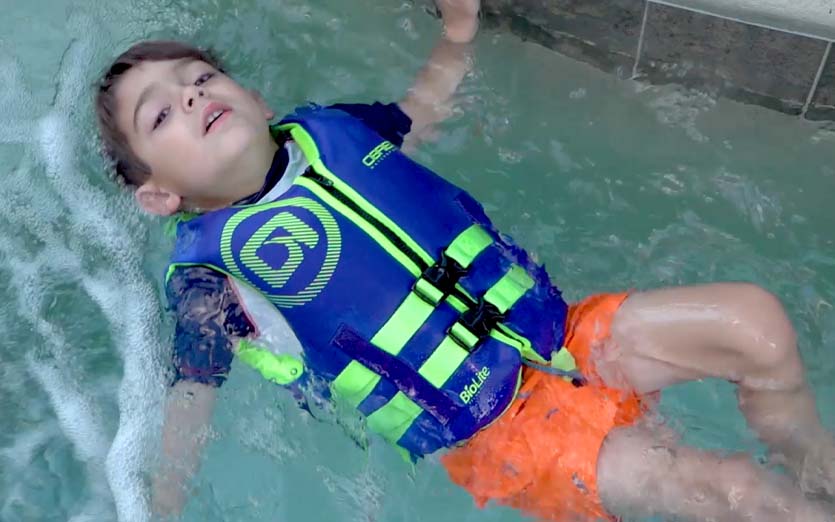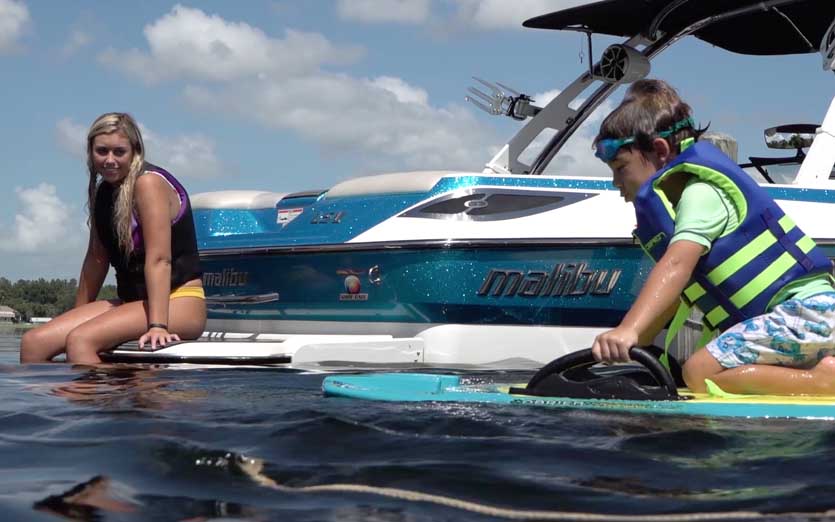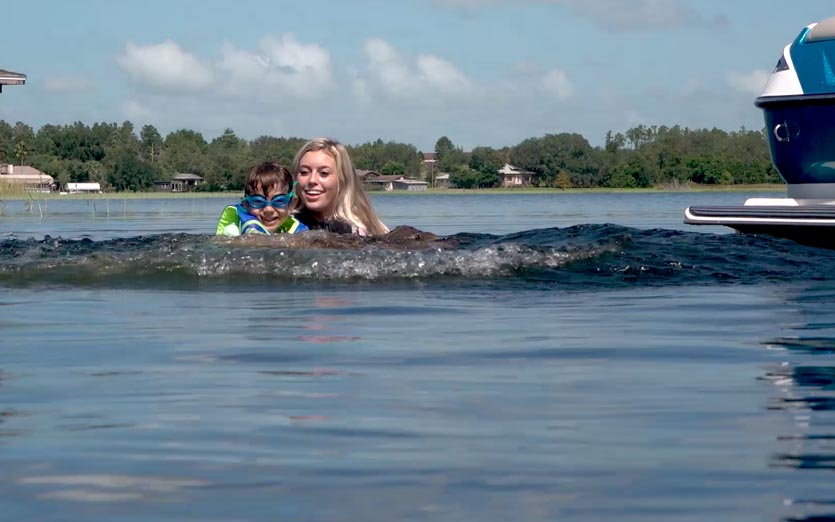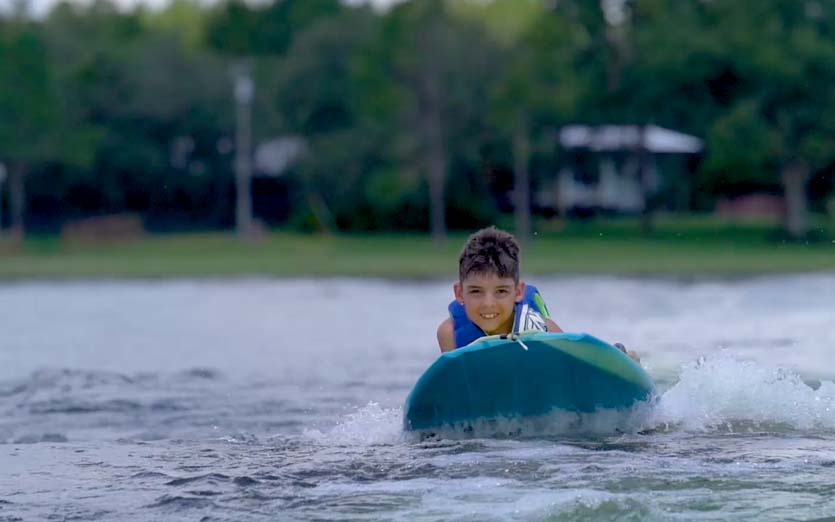Choosing the proper size life jacket is one of the most important decisions you can make on the water. Not only does this provide the necessary safety, but it also maximizes your overall comfort.Let’s help you find the perfect fitting life jacket.
A life jacket that’s too big will move around in the water and often ride up to your chin or ears; making it very difficult to float comfortably. One that’s too small, may not close entirely or have the proper buoyancy to float you. So, what should you look for to find that perfect fit?
For kids, life jacket sizing is relatively simple since the sizes are based primarily on weight ranges. If you know the child’s weight, then you can reference the youth life jacket size chart to see which size is recommended.
For adults, sizing tends to be a little more complicated. Life jackets are not sized the same way as your favorite t-shirt, but there is a great starting point to finding the right fit — knowing your chest size. This measurement is the basis for how most adult life jackets are sized. Using a soft tape measure, wrap the tape around your torso and take the measurement at the fullest part of your chest. Based on that number, reference the adult life jacket size chart to see which size is recommended for you.
Now that you’ve got a recommended size to start with, let’s go over the appropriate fit for both neoprene and nylon life jackets.
For a neoprene style life jacket, as you put it on, you should have to stretch the life jacket a little bit for the zipper to connect. As you zip it up, the life jacket will pull nice and snug into your chest. From there, connect the buckles and adjust the belts so they feel snug as well. To make sure you’ve got the right size, raise your arms over your head and have someone else lift the life jacket from your shoulders. If no one is there to help, then you can do it yourself. If it stays securely in place, you should be good to go. If it raises up to your ears or chin, try a smaller size.
Now that we’ve covered neoprene, let’s talk about nylon. The material in these life jackets really isn’t designed to stretch like neoprene. So, when you put them on, the front panels should come close together, the buckles should be easy to secure, and the belts should be pulled tight for a snug fit. If there is a large gap between the front panels and the belts barely connect, then the life jacket is too small and you should try a larger size. If the front panels overlap when the belts are pulled tight, then the life jacket is too big and you should try a smaller size.
Before participating in any watersports or activities where you may need a life jacket, be sure to test the life jacket in the water first.
A properly fitting life jacket should remain securely in place and provide the wearer with adequate buoyancy to keep their head above water.
For adults with younger children, reference the pamphlet that comes attached to the child’s life jacket and teach them how to float comfortably in water with their life jacket on. Taking these measures is extremely important since young children tend to frantically move around when they unexpectedly end up in the water. These movements can actually hinder the effectiveness of the life jacket which may cause the child to panic and create an unpleasant experience. Remember that floating calmly and comfortably is a learned skill and is necessary to keep everyone happy and enhance safety on the water.
Please follow these guidelines to improve your overall safety on the water.
For more information about life jackets in general visit the Life Jacket Association website at www.lifejacketassociation.org. Also, if you have any questions for us, feel free to leave comments below or reach out to us at Obrien.com.
